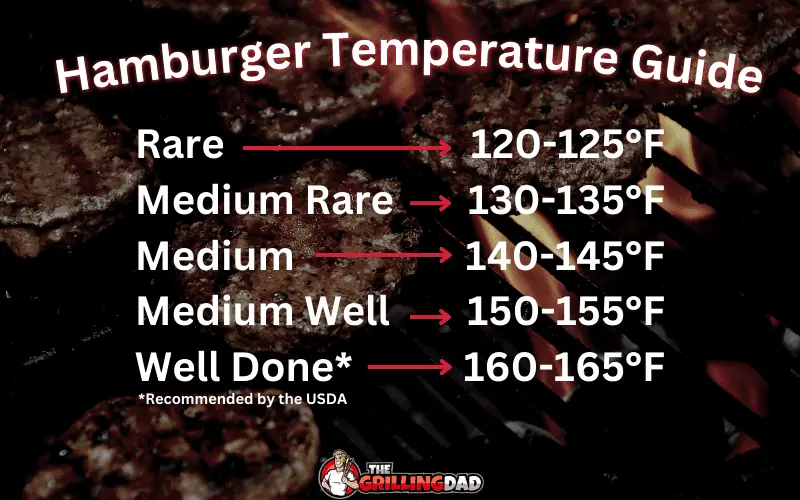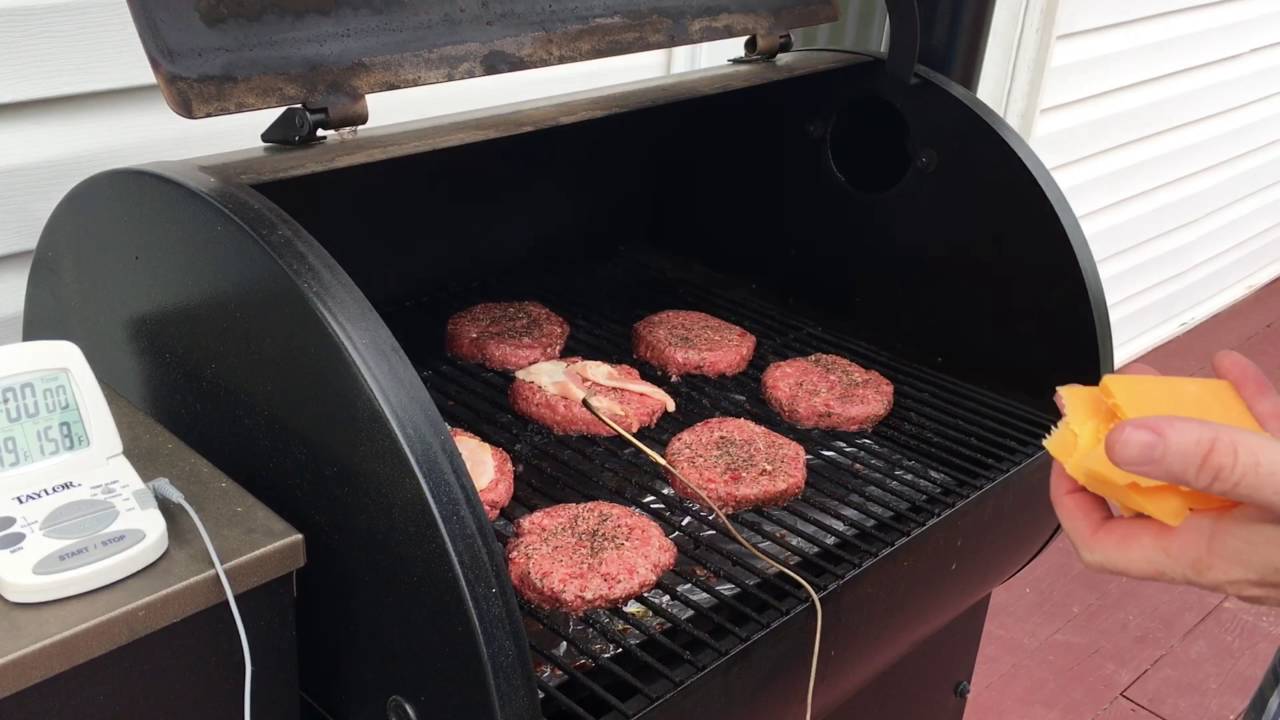What Temp Do You Cook Hamburgers On A Pellet Grill

Unlocking Pellet Grill Perfection: The Ideal Temperature for Juicy Hamburgers
Pellet grills have surged in popularity for their ease of use and ability to impart delicious smoky flavor to food. But mastering the art of cooking the perfect hamburger on a pellet grill requires understanding the optimal temperature and techniques. This guide will walk you through achieving hamburger nirvana, ensuring juicy, flavorful patties every time.
Understanding the Temperature Spectrum for Hamburger Cooking
Unlike other types of grilling where you might adjust temperatures by manipulating coals or gas flames, pellet grills offer precise temperature control. This allows for a consistency difficult to achieve otherwise. However, the "best" temperature depends on your desired level of doneness and your preferred cooking method.
Low and Slow (225-250°F / 107-121°C)
This method is ideal for imparting maximum smoke flavor and achieving a more tender, evenly cooked burger. The lower temperature allows the smoke to penetrate deeply into the meat. This technique typically requires a longer cooking time.
Pros:
- Intense smoke flavor
- Even cooking throughout
- Less risk of burning the outside before the inside is cooked
Cons:
- Longer cooking time
- Can result in a less pronounced sear (consider searing after smoking)
Medium Heat (325-350°F / 163-177°C)
A good balance between smoke flavor and cooking speed. This temperature allows for a decent sear while still providing enough time for the smoke to penetrate the meat.
Pros:
- Good balance of smoke and sear
- Moderate cooking time
- Versatile for different hamburger thicknesses
Cons:
- Requires more careful monitoring to prevent overcooking
- Smoke flavor not as intense as low and slow
High Heat (400-450°F / 204-232°C)
This method focuses on achieving a strong sear and a quick cook. While you'll still get some smoke flavor, the primary focus is on the Maillard reaction, which creates that delicious crust on the burger.
Pros:
- Excellent sear
- Fast cooking time
- Ideal for thinner burgers
Cons:
- Less smoke flavor
- Higher risk of burning the outside before the inside is cooked
- Requires very close monitoring
The Sweet Spot: 350°F for Most Hamburgers
For most hamburgers, especially those around 1/2 inch to 3/4 inch thick, a temperature of 350°F (177°C) is often considered the sweet spot. This temperature provides a good balance between smoke flavor, sear, and cooking speed. It also allows for a relatively forgiving cooking process, reducing the risk of overcooking.
Internal Temperature Matters: Achieving Your Desired Doneness
Regardless of the cooking temperature, the most crucial factor is the internal temperature of the hamburger. Use a reliable instant-read thermometer to ensure your burgers are cooked to your preferred level of doneness. The USDA recommends cooking ground beef to an internal temperature of 160°F (71°C) for safety.
Here's a guide to internal temperatures for different levels of doneness:
- Rare: 125-130°F (52-54°C)
- Medium-Rare: 130-140°F (54-60°C)
- Medium: 140-150°F (60-65°C)
- Medium-Well: 150-160°F (65-71°C)
- Well-Done: 160°F+ (71°C+)
Tips for Cooking Perfect Hamburgers on a Pellet Grill
- Choose the Right Ground Beef: Opt for ground beef with a fat content of around 80/20. The fat adds flavor and moisture, preventing the burgers from drying out.
- Don't Overwork the Meat: Gently form the patties, avoiding over-mixing, which can result in tough burgers.
- Make a Thumbprint Indentation: Press a slight indentation in the center of each patty. This helps prevent the burgers from bulging in the middle during cooking.
- Season Generously: Season the patties generously with salt, pepper, and any other desired spices.
- Preheat the Grill: Ensure the pellet grill is fully preheated to the desired temperature before placing the burgers on the grates.
- Don't Press the Burgers: Avoid pressing down on the burgers with a spatula, as this squeezes out the flavorful juices.
- Use a Thermometer: Monitor the internal temperature of the burgers with an instant-read thermometer.
- Rest the Burgers: Let the burgers rest for a few minutes after cooking. This allows the juices to redistribute, resulting in a more flavorful and juicy burger.
Enhancing the Smoke Flavor
While pellet grills inherently impart a smoky flavor, there are ways to enhance it further:
- Use a Smoke Tube: A smoke tube filled with wood pellets can be added to the grill to provide additional smoke.
- Choose the Right Pellets: Experiment with different wood pellet flavors to find your favorite. Hickory, mesquite, and applewood are popular choices for hamburgers.
- Cold Smoking: Briefly cold smoke the patties before grilling at a higher temperature for a more intense smoky flavor. (Note: Cold smoking requires careful monitoring to ensure food safety.)
Addressing Common Pellet Grill Hamburger Problems
Dry Hamburgers:
Possible Causes: Overcooking, using ground beef with too low a fat content, pressing down on the burgers during cooking.
Solutions: Use a meat thermometer to avoid overcooking, use 80/20 ground beef, avoid pressing down on the burgers, consider adding bread crumbs and milk to the burger mix.
Hamburgers that Fall Apart:
Possible Causes: Using too lean ground beef, not enough binding ingredients, overworking the meat.
Solutions: Use 80/20 ground beef, add an egg or breadcrumbs to the burger mix, gently form the patties without over-mixing.
Unevenly Cooked Hamburgers:
Possible Causes: Inconsistent grill temperature, unevenly formed patties, placing cold patties on the grill.
Solutions: Ensure the grill is preheated and maintains a consistent temperature, form the patties to be uniform in thickness, allow the patties to come to room temperature slightly before grilling.
Popular Pellet Grill Brands for Hamburger Perfection
Several brands offer excellent pellet grills suitable for cooking hamburgers:
- Traeger: A pioneer in the pellet grill market, known for its user-friendly controls and consistent performance.
- Pit Boss: Offers a range of pellet grills at various price points, known for their value and durability.
- Camp Chef: Known for its innovative features, such as slide-and-grill technology for direct flame searing.
- Weber: A trusted name in grilling, Weber offers high-quality pellet grills with excellent temperature control.
When choosing a pellet grill, consider factors such as hopper capacity, cooking area, temperature range, and warranty.
Beyond the Basics: Experimenting with Flavors and Techniques
Once you've mastered the basics, don't be afraid to experiment with different flavors and techniques. Try adding cheese, bacon, or other toppings to your burgers. Explore different wood pellet flavors to find your favorite combinations. Consider stuffing the burgers with cheese or other fillings for a unique twist.
Maintenance for Optimal Pellet Grill Performance
Proper maintenance is essential for ensuring your pellet grill continues to perform optimally. Clean the grill regularly, including removing ash and grease buildup. Inspect the auger and hopper for any obstructions. Cover the grill when not in use to protect it from the elements.
Final Thoughts: The Path to Pellet Grill Hamburger Mastery
Cooking perfect hamburgers on a pellet grill is a rewarding experience. By understanding the optimal temperature, monitoring internal temperature, and following these tips, you'll be well on your way to creating juicy, flavorful burgers that will impress your family and friends. Remember that practice makes perfect, so don't be afraid to experiment and find what works best for you and your equipment. Enjoy the process and savor the delicious results!










